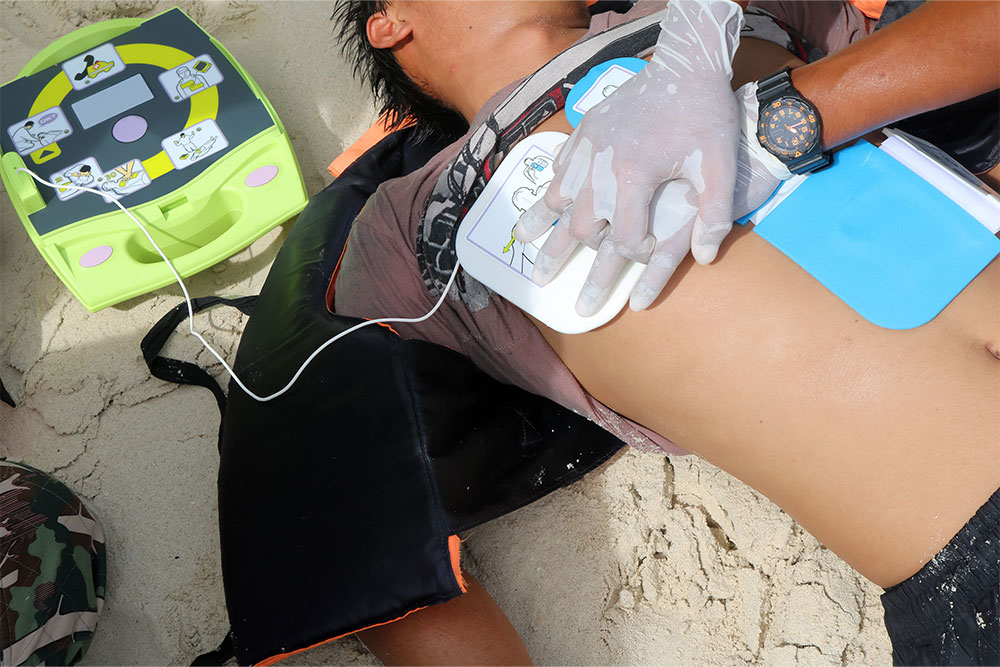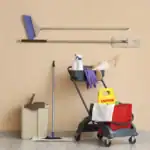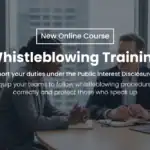
You only have seconds to help a cardiac arrest victim before their chance of survival plummets. That’s why it’s critical to learn how to use a defibrillator before you ever have to.
In this guide, we’ll explain the right sequence for emergency treatment of a cardiac arrest. This includes combining cardiopulmonary resuscitation (CPR) and using a defibrillator to give someone the best possible chance of survival.
What is a Defibrillator?
A defibrillator is a device that delivers an electric shock to the heart of a casualty in the event of a cardiac arrest, returning the heart to a normal rhythm. This process is called defibrillation.
A defibrillator may also be called an Automated External Defibrillator (AED), Public Access Defibrillator (PAD) or simply a defib. These are all the same devices.
Defibrillators are easy to operate and safe for adults and children older than one year.
And while they’re only helpful in the event of a cardiac arrest, they won’t harm a casualty suffering from a different condition.
AED Defibrillator Training
The AED Defibrillator Training provides an understanding of what automatic external defibrillators or AEDs are and how to set them up correctly and use them along with CPR to act proficiently in an emergency.
What to Do in a Cardiac Emergency
You’ll be able to spot a cardiac arrest victim quickly. The casualty will collapse and fall unconscious. The casualty’s heart will stop pumping blood around their body. They won’t respond to you and their breathing will become erratic or stop entirely (but this may happen quickly, after they’ve lost consciousness).
They will die in minutes without treatment.
Call Emergency Services & Get Help
You must always phone 999 or 112 immediately if you’re at the scene of a cardiac arrest.
Ask for help if there are other people present. They can call the emergency services while you tend to the casualty. Otherwise, leave the emergency call on speakerphone so you can free your hands.
Keep emergency services on the line and use the ABC rule to check the casualty
Follow the ABC Rule
The ABC rule is an easy to remember mnemonic that can help you get the treatment order right in an emergency.
It consists of three quick checks:
A – Airway: Make sure the casualty’s airway is clear and free of obstructions. Put your hand on their forehead and lift their chin to open their airway.
B – Breathing: Check for signs of breathing. If the casualty isn’t breathing or is taking infrequent, raspy or gasping breaths, they are in cardiac arrest. Do not do this for more than 10 seconds.
C – Circulation: Check for major wounds or other signs of blood loss. Any severe bleeding must be treated immediately by applying direct pressure to the injury.
Start CPR & Ask for a Defibrillator
You must start CPR now.
Ask your helper to go and find a defibrillator. Don’t leave the casualty alone to look for one yourself.
Some websites can show your helper the location of a defibrillator, such as The Circuit, or the emergency call handler can often direct you to one.

Perform CPR
Now perform CPR to give the casualty a chance of survival. CPR keeps the heart pumping and blood moving around the body before a defibrillator or emergency services can arrive.
It’s no longer advised for everyone to give rescue breaths. They aren’t as effective as chest compressions and carry the risk of disease transmission. Only use rescue breaths alongside compressions if you’re fully trained.
If you aren’t trained, use chest compressions only and follow these steps:
- Kneel next to the casualty and put the heel of your hand on the middle of their chest. Put your other hand on top of the first and interlock your fingers.
- Keep your arms straight and lean over the casualty. Press hard to a depth of about five to six centimetres before releasing the pressure, allowing the chest to come back up.
- Aim for a speed of two chest compressions per second. The beat of the song “Staying Alive” can help you keep the right pace.
How Long You Should Perform CPR
You should continue to perform CPR until:
- Emergency help arrives and takes over
- The person starts showing signs of life and starts to breathe normally
- You’re too exhausted to continue (if there is a helper, you can change over every one-to-two minutes, with minimal interruptions to chest compressions)
- A defibrillator is on the scene and ready to be used. You must continue CPR until your helper has set up the device.
Steps for Using a Defibrillator
Switch on the defibrillator immediately. Remember, one person must continue CPR until it’s ready for use.
The device will give you instructions on what to do. But it’s still helpful to know how to use a defibrillator. The faster your response, the better the chance of survival for the casualty.
Step 1: Make sure the defibrillator is switched on. The device will start to give audio instructions on what to do next. Continue CPR while listening to the defibrillator.
Step 2: Attach the sticky pads as shown in the instructions. Keep up CPR until the pads are correctly fitted. It’s also possible the defibrillator will provide audio instructions on how to do so.
Step 3: Let the defibrillator analyse the patient’s heart rhythm. The device will confirm if a shock is needed and will only do so if it’ll help. You shouldn’t worry about making the situation worse.
Step 4: The defibrillator will prompt you if it’s about to deliver a shock. Ensure you’re not touching the patient and shout ‘Clear!’ just like doctors do in movies.
Step 5: An automatic defibrillator will deliver the shock now. Some devices need you to press the shock button. It will prompt you to do this if necessary.
Step 6: The defibrillator will tell you if the shock was successful. Continue CPR until the defibrillator tells you to stop. It will then analyse the patient’s heart again.
Step 7: Listen for instructions from the defibrillator and continue CPR until the casualty shows signs of recovery or the defibrillator tells you to stop.
Step 8: If the casualty shows signs of recovery, put them in the recovery position but leave the defibrillator attached. Keep monitoring them and be prepared to perform CPR again.
Where to Learn More About How to Use a Defibrillator
Around 35,000 out-of-hospital cardiac arrests happen in the UK annually, with 15% occurring in the workplace. The majority of casualties don’t survive when CPR alone is used. Learning how to use a defibrillator now gives you the confidence to react appropriately in an emergency and give someone the best possible chance of survival.
Our AED Defibrillator Awareness course teaches participants the steps to follow using a defibrillator alongside CPR in an emergency cardiac event. The course is online and can be completed in around 15 minutes.
It’s part of our full range of First Aid Courses that train participants how to provide first aid in a variety of emergency situations. And our online courses are approved by the Health and Safety Executive as a resource for refreshing knowledge gained from face-to-face training.





















